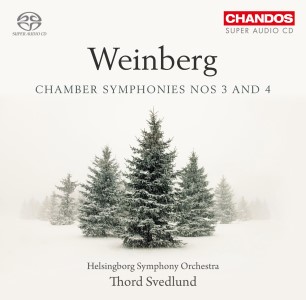
..:: audio-music dot info ::.. |
| A l b u m D e t a i l s |
 |
Label: | Chandos Records |
| Released: | 2015 | |
| Time: |
65:55 |
|
| Category: | Classical | |
| Producer(s): | Lennart Dehn | |
| Rating: | ||
| Media type: | CD |
|
| Web address: | www.music-weinberg.net | |
| Appears with: | ||
| Purchase date: | 2015 | |
| Price in €: | 1,00 | |
| S o n g s , T r a c k s |
| A r t i s t s , P e r s o n n e l |
| C o m m e n t s , N o t e s |
That’s true, I got a bit lost... You know, I simply didn’t want to continue the sequence of high numbers [after Symphony No. 20]... The new symphonies differ neither in length nor in character from the Second, the Seventh, or the Tenth Symphonies [which are also for chamber ensembles].
The gentle consonances on the strings – violins, violas – born from silence, wove a delicate web, through which were heard some kind of children’s song, or lullaby: a secret pondering, hidden away by a Jewish mother, fearing that sly, little domestic dybbuks [in cabbalistic tradition devils, more specifically souls of dead sinners in the body of the living] would get to hear of it and pour corruption over her child...
The caressing consonances are taken up again, and beneath the accompanimentof pizzicato strings sounds a quiet, sorrowful melody on the clarinet. Sorrowful, even though in the major. But in Weinberg’s music major is sorrowful and minor is bright, for everything in this unstable world is woven from grief and happiness, from fear and hopes...
In the music, yet again the gentle intonations have appeared in the violins and violas, circling like a little bird on its nest with its chicks...
I shook at the unexpected fortissimo... God knows what Weinberg was thinking of... But at his command, on the foundation of the despairing tremolo of the strings, the clarinet has begun to rush about – up, down, for a moment resting within the limits of the stave, then urgently rising above it...
| L y r i c s |
| M P 3 S a m p l e s |